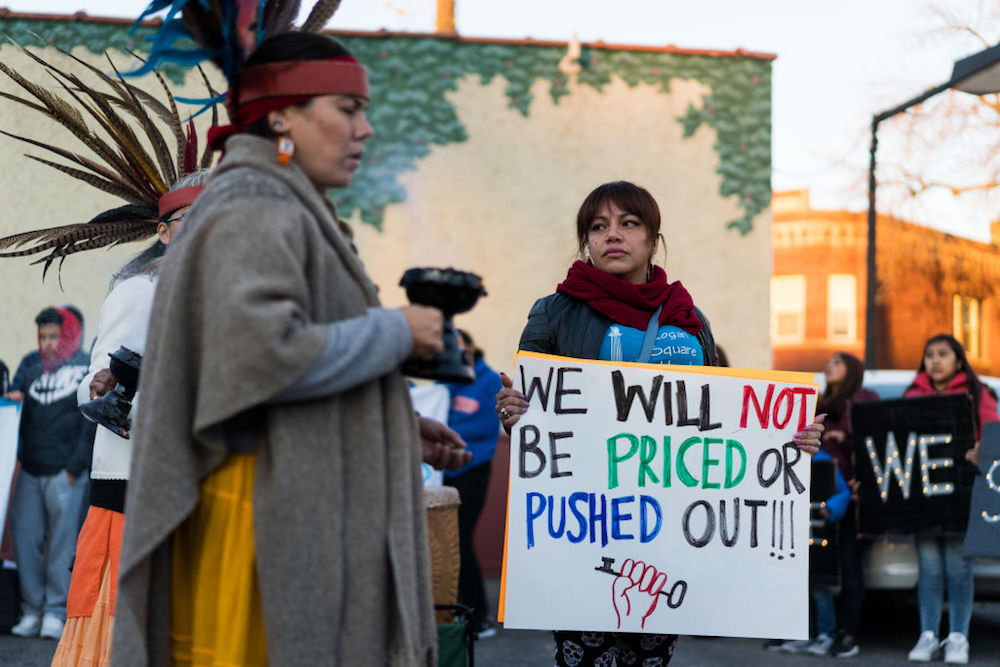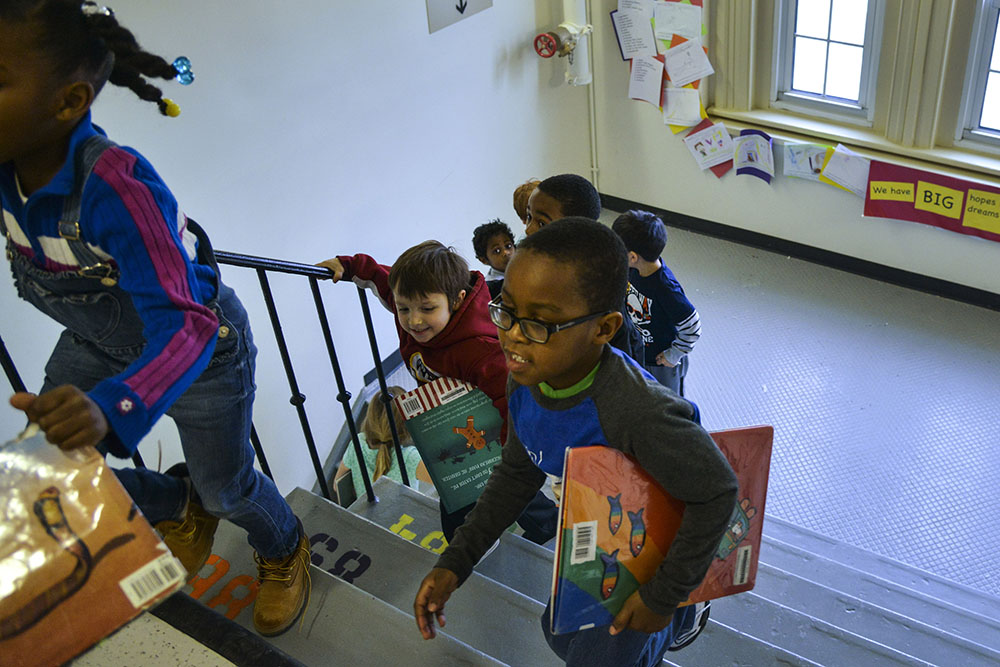Recently, Apple joined Facebook, Google, and a number of other tech companies pledging to make investments in increasing housing affordability in the Bay Area. Tech giant Amazon is also funding construction of a shelter for people experiencing homelessness in Seattle, with a number of bathrooms that may rival those in Jeff Bezos’ 27,000 square foot D.C. residence.
These moves, in communities in which tech companies have extracted special tax treatment and other benefits for decades, are supposedly meant to increase “affordable” housing stock. But for many area workers, including those at tech companies, the new housing will remain out of reach.
Apple’s plan calls for $2.5 billion in spending, including $1 billion in an affordable housing investment fund and $1 billion in first-time buyer mortgage assistance. It is the most generous of recent rollouts. Facebook committed $1 billion to the construction of 20,000 units, use of land owned by the company, and construction of housing for “essential workers” like teachers and firefighters. Google similarly offered $1 billion, primarily in the form of land. Meanwhile, philanthropic ventures such as The Bay’s Future, driven by tech company executives, are also pledging to wade in to the fight for affordable housing in the Golden State.
Get Talk Poverty In Your Inbox
“It’s a good thing these companies stepped forward,” said Jeffrey Buchanan of Silicon Valley Rising, a coalition campaign that includes unions and local advocacy groups. “There’s a huge need for financing” of the type that these commitments will provide.
But the problem of housing in the region isn’t just one of money, he explained. It also involves policy, better wages, and responsibility on the part of companies rapidly building up their campuses without adding complementary housing to prevent displacement — and ensure their own workers are housed.
Research indicates California needs 3 million new housing units by 2025; the Bay Area alone needs at least 187,000 units across all income levels according to the most recent state projection. 41.5 percent of households in the Bay Area are cost-burdened, meaning they spend more than 30 percent of their incomes on housing. 25,000 workers a day endure “super-commutes” of more than 90 minutes as they struggle to get from affordable communities to work in Silicon Valley.
In its recent “Out of Reach” report, the National Low-Income Housing Coalition found that the Bay Area’s housing wage — the amount of money you need to afford a two-bedroom apartment — ranges from $41 to $91 per hour. Statewide, workers need to work 116 hours a week at minimum wage to afford housing.
Meanwhile, a deeper look at many of the tech companies’ proposals furnishes vague details, though much talk of “affordable housing.” Many of the plans explicitly state the intent to produce mixed-income housing, rather than 100 percent affordable developments, something developers argue is usually necessary to make a development viable, especially in areas with high construction costs.
The definition of “affordable housing” in the Bay Area may surprise those who aren’t California residents. Low-income housing, defined by the Department of Housing and Urban Development as 80 percent of the area’s median income of $136,800, is still $129,150 for a family of four, and households making $80,600 are considered “very low-income.” “Extremely low-income” is $48,350.
The percentage of set-asides for affordable units varies; Facebook recently pledged 225 of 1,500, or 15 percent, of a planned Menlo Park development’s units for “affordable” housing. Notably, inclusionary zoning requirements in some Bay Area cities, like San Francisco, already force developers to include a set number of affordable units or pay in-lieu fees, and developers also benefit from incentive programs for constructing affordable housing. Thanks to state and federal policy, noted Buchanan, these units will eventually expire, with pricing jumping up to market rate.
While housing affordability for those outside the tech industry who feel squeezed by mounting costs driven by high tech company income is a significant issue, it’s a problem within the industry too, where all tech workers are not created equal. For employees in technical roles — such as developers, site reliability engineers, and more — it’s possible to afford to buy or rent housing units. Likewise for those in high-level non-technical roles, including attorneys, marketing executives, and some managerial positions.
But for the workers in the non-technical pipeline, including assistants, operations personnel, researchers, and customer service representatives, there’s a tremendous pay disparity — one that is exacerbated for contract workers, who are becoming a growing part of the tech workforce because of their low cost and shielded liability. Those workers are sleeping in their cars in the parking lots of their employers because they cannot afford housing, cleaning toilets, cooking food, driving buses, and providing security at marginal pay. When they’re not at companies like Facebook and Google, some are taking up shifts elsewhere, driving for ride shares, and hustling to pay the rent.
The tech companies’ plans lean heavily in to the popular argument that the affordability crisis in the Bay Area is one of availability; building housing, at any price point, is supposed to relieve this pressure. Advocates across the state are also pushing for rollbacks of density restrictions that limit the height and number of units that can be built, and promoting the of accessory dwelling units — also known as in-laws or granny units — to rapidly increase access to housing. Buchanan notes a growing interest in the use of co-housing — community living that integrates public and private spaces in a planned development — as well as community land trusts, which steward land to promote affordable housing, retaining ownership of the land while encouraging affordable development that gives residents a stake in their homes.
Not all advocates are convinced that this approach, known as filtering or trickle-down housing, is effective. Some raise concerns about the risks of displacement and gentrification, describing this as “a problem of equity and access,” not simply a question of housing units by the numbers. “YIMBYs,” wrote a collective from the LA Tenants Union, referring to boosters who push for filtering, “do not support empowering and protecting tenants through policies like right to legal counsel, just-cause eviction, and rent control. They overwhelmingly ignore the possibility of increasing supply with public or social housing.”
The policy struggles over housing highlight that simply building more isn’t always an option, speaking to deeper systemic problems that make it hard for people to find safe, sanitary, affordable housing in their communities. And even if building more housing is possible, say community organizations, that’s only one part of the solution to a complex problem.
Companies like Facebook and Apple are pledging to collaborate closely in public-private partnerships with policy-forward solutions, while still implying that privatizing public services is the only way to fix them. As long as tech companies dodge taxes, accept handouts and incentives, and receive preferential treatment, while relying on large philanthropic gestures to distract from their business practices, it’s hard to determine how much they can truly contribute to local economies.











